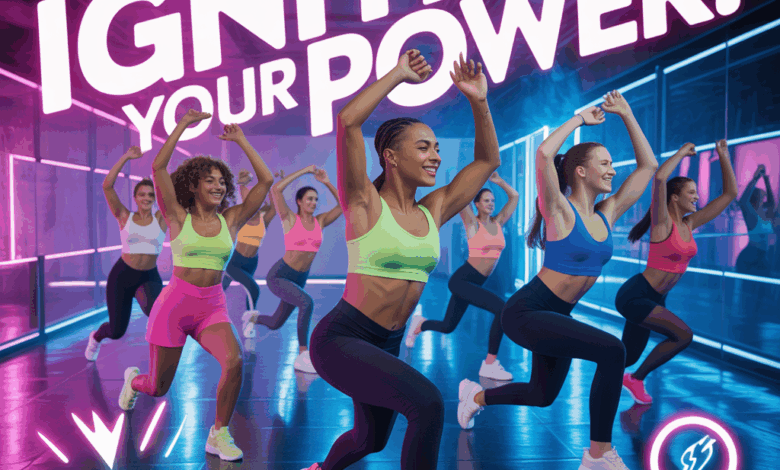How Many Calories Does Just Dance Burn

Ever caught yourself sweating after a 30‑minute Just Dance session and wondered, “Is this actually burning calories or just fun?” Whether you’re using it as a quick cardio fix, a way to stress‑relieve after work, or as a family fitness activity, knowing how many calories does Just Dance burn helps you plan workouts, track progress, and stay motivated.
Quick answer: calories burned playing Just Dance (overview)
Short version: it varies. Most people burn anywhere from about 180 to 700 calories per hour playing Just Dance depending on intensity, body weight, and how much you move. A light, low‑effort session will be at the lower end. If you really go all out — full body, high tempo, and no breaks — you can approach the higher end of that range.
How many calories does Just Dance burn — real numbers and examples
Calories burned depend on three main factors: your weight, the intensity (how vigorously you dance), and duration. Fitness professionals often use METs (metabolic equivalents) to estimate energy cost. Here are some practical examples using typical MET ranges for dance video games and dance cardio sessions.
Estimated calories per minute (by intensity)
- Light effort (≈3 METs): ~3–4 kcal/min
- Moderate effort (≈5 METs): ~5–7 kcal/min
- Vigorous effort (≈7–9 METs): ~7–10+ kcal/min
Converted to hourly values, that’s roughly:
- Light session: 180–240 kcal/hour
- Moderate session: 300–420 kcal/hour
- Vigorous session: 420–600+ kcal/hour
Real‑world examples
- 60 kg (132 lb), moderate (5 METs): ≈315 kcal/hour
- 75 kg (165 lb), moderate (5 METs): ≈395 kcal/hour
- 90 kg (198 lb), vigorous (7 METs): ≈630 kcal/hour
These are estimates — your smartwatch or fitness tracker can refine them, but they’re useful benchmarks to compare Just Dance to other cardio activities.
Why Just Dance can be a legitimate workout
Just Dance is more than entertainment; it’s a form of dance cardio and “exergaming” that gets your heart rate up, improves coordination, and uses large muscle groups when you fully commit to the moves. Benefits include:
- Cardiovascular conditioning: sustained movement raises heart rate and oxygen demand.
- Calorie burn: full‑body movement equals more energy spent than standing still.
- Mobility and balance: frequent direction changes and reach patterns improve neuromuscular control.
- Adherence: it’s fun, social, and easier to stick to than some traditional workouts.
How to maximize calorie burn while playing Just Dance
Small technique and programming changes can significantly boost your caloric expenditure.
Practical tips
- Increase intensity: choose higher difficulty songs or push to match the most energetic dancer on screen.
- Move full‑body: exaggerate arm reaches, add knee lifts, and use core twists to recruit more muscles.
- Go continuous: reduce rest between songs or do short active recovery (march in place) instead of stopping.
- Interval style: alternate 2–3 high‑intensity songs with 1 lower‑intensity track for a HIIT‑style session.
- Wear a heart‑rate monitor: track effort and aim for your target HR zones for more accurate calorie estimates.
- Add resistance: light ankle/wrist weights or a weighted vest can increase demand — but use caution and proper form.
Example workouts
- 20‑minute HIIT Just Dance: 3 min warm‑up song → 5× (2 min max effort song + 1 min active recovery) → 3 min cool‑down.
- 30‑minute steady cardio: 6 songs of moderate intensity, maintain continuous movement, focus on big arm swings.
- Combo circuit: 1 song dancing → 1 set of bodyweight squats or push‑ups during the breaks → repeat for 30–40 minutes.
Pairing Just Dance with a balanced fitness plan
While Just Dance is a great cardio tool, pairing it with strength training and mobility work gives the best results for body composition and long‑term fitness.
- Strength training 2–3× weekly builds muscle, which increases resting metabolic rate.
- Mobility and flexibility sessions reduce injury risk and improve dance range of motion.
- Consistent sleep and hydration are essential — poor recovery reduces workout effectiveness.
- Track progress beyond the scale: measure endurance, energy, mood, and how comfortably you complete songs.
If you’re looking for structured plans to complement your Just Dance sessions, check out our workout routines and wellness tips pages for ideas that fit a home routine.
Nutrition and recovery for better results
Calories burned during Just Dance contribute to your daily energy deficit or maintenance, but nutrition matters. Aim for balanced meals, adequate protein to support muscle repair, and smart pre‑workout fueling (a small snack with carbs 30–60 minutes before higher‑intensity sessions).
- Post‑dance protein: 15–25 g of protein after workouts helps recovery.
- Hydration: sip water between songs, especially during longer sessions.
- Consistency: regular moderate sessions add up — twenty minutes most days beats one long session a week.
For meal plans and macro guidance, explore our nutrition guides.
Frequently Asked Questions
It depends on effort and body weight. Expect roughly 180–240 kcal/hour for light sessions, 300–420 kcal/hour for moderate dancing, and 420–600+ kcal/hour if you go all out. Personal trackers can refine these estimates.
Yes. When you sustain movement and elevate your heart rate, Just Dance functions as cardio. The intensity determines whether it’s light, moderate, or vigorous aerobic activity.
You can lose weight if your total energy expenditure exceeds intake. Just Dance can contribute meaningfully to daily calorie burn, especially with consistent sessions and higher intensity, but combining dance with strength training and good nutrition produces faster and more sustainable results.
Conclusion — Try tracking your burn and level up your home workouts
So, how many calories does Just Dance burn? It varies, but with intentional effort you can turn your favorite game into an effective cardio workout that burns real calories, improves fitness, and keeps you coming back because it’s fun. Start by tracking one week of sessions, use the intensity tips above to increase burn safely, and combine dance cardio with strength and good nutrition for best results.
Ready to make Just Dance part of a smarter fitness plan? Try a 20‑minute interval session today, log your effort, and visit our workout routines and nutrition guides for complimentary plans that fit your schedule. Let the music move you — and the numbers motivate you.





